555 Circuits and Ideas
A compilation of 555 related circuits in my other blogs and
pages. User Interface circuits, Long Duration Timer
Circuits and Infra Red LED Flashers.
Audio Visual User Interface with Ack - Every Hour “+V UR” Goes High for 120 Seconds. The Buzzer Sounds and a Red LED turns on. The Guard has to respond by Pushing the Switch. The Green Light Flashes and the external Flip-Flop logic brings “+V UR” Low, The Buzzer Sound Stops and Red Light Goes off....
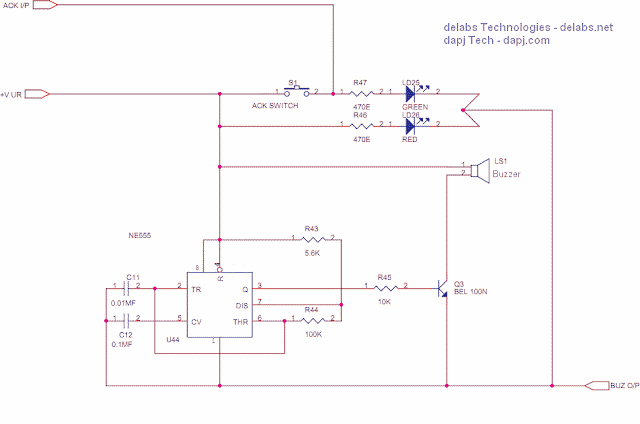
Display On Timer with 555 - When the “Display Now” is pressed it triggers the Monostable Multivibrator made of a 555. The output “EN” goes high for the time duration defined by C27 and R71. The 555 output as you know can drive more than 200mA for quite some time without much heating up. Many LEDs can be driven with the current limit resistors. I used CMOS chips to drive the LEDs, this circuit was used for the Logic only.
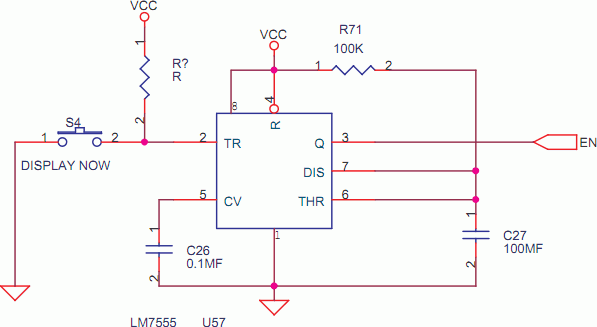
Frequency Divider 74HCT4040 - U1 7555 is a CMOS version of 555. The 555 here is in Astable Oscillator mode, C1 and C4 are decoupling capacitors 0.1uF value, ceramic disc. The output is around 100kHz, If C3 is plastic or mica the frequency output will be stable with temperature. It is better to use a crystal oscillator.
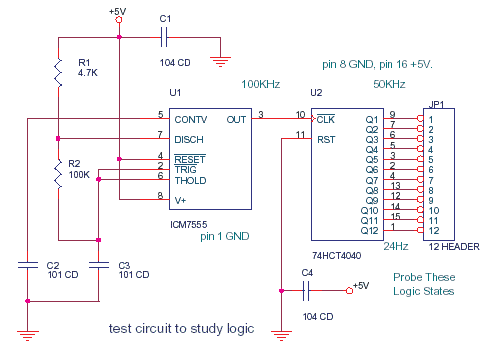
InfraRed LED Flasher for Optical Switch - 555 is used as an astable oscillator and it flashes the Infra red LED D1 at a high speed, The object close to this LED reflects the light along with the ambient light which may also be sunlight.
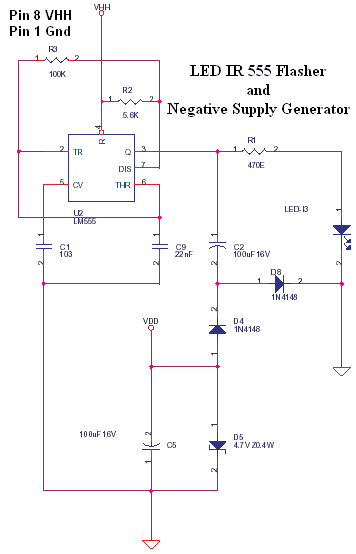
Initial Accuracy of 555
The repeatability of the timing over usage in days, months or
even years. Change in performance from device to device for the
same RC values and Supply voltage. NE555 the value is 1% Initial
accuracy, that is excellent. Use a Plastic Capacitor for C and
Metal Film Resistor for R for best results. 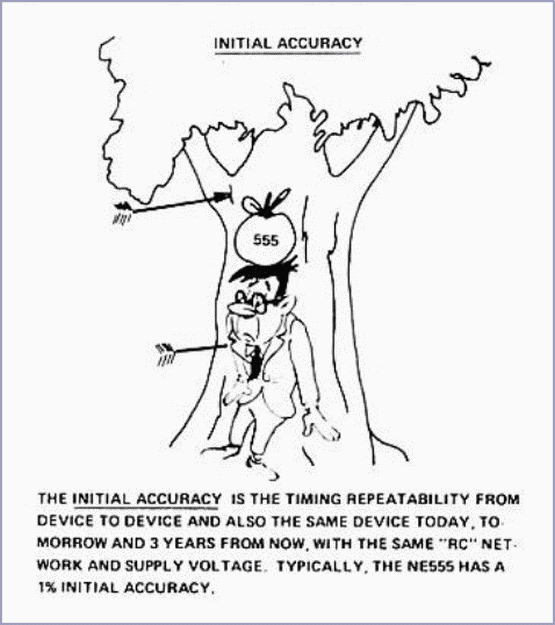
Timing Drift with Temperature
In monostable mode the 555 has a 50 ppm/deg C and in Astable it is around 150 ppm/deg C. ppm is parts per million. How to understand : 1% = 1/100 and 1ppm = 1/1000,000 ... So 1000 ppm = 0.1% and 100 ppm = 0.01%. In other words a 10 deg C change in temperature may cause a drift of 0.1% in timing of Astable.
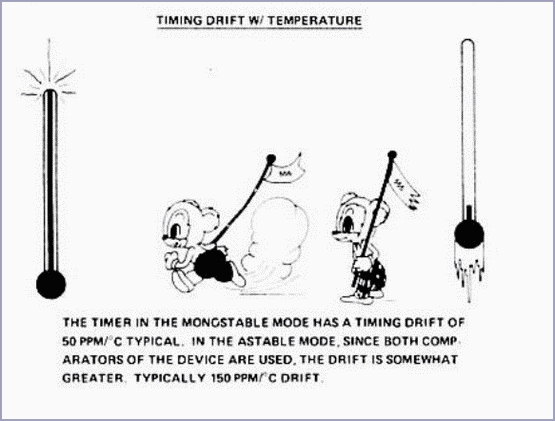
Timing Drift with Supply Voltage
Typical drift is 0.1% per volt. That means the timing will change around 0.1% if you change the supply voltage by one volt. If at 5V the timing is 100mS, at 8V the timing will change by 0.1% x 3V = 0.3%. Now see the datasheet and graphs for the impact of this marginal drift. Use a Regulated power supply, keep RC far from hot parts, use Plastic caps and Metal Film Resistors. Remember even copper tracks conduct heat.
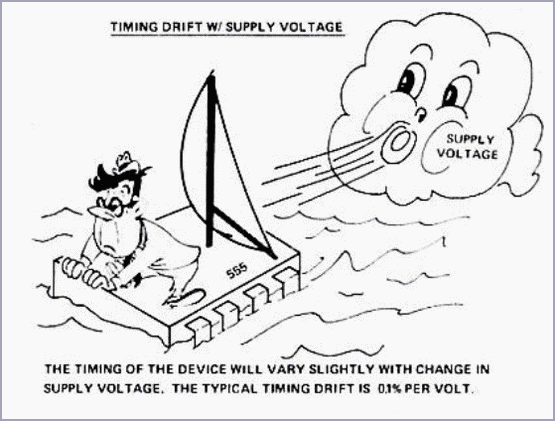
Images above are from the Original Signetics 555 Datasheet
...
...
...
...
...
delabs Technologies
20th Apr 2020
...
The documents, software, tools and links are provided to enhance the ability of an electronics student, hobbyist or professional by sharing information. The information, links etc. should be used by the website visitor, at his or her own risk and responsibility. There may be concept, design and link errors in the pages.
Creative Work, ideas and documents of delabs can be used for Product Design and Development by R&D Engineers, Hobbyists, Students and even firms for creating useful products. These cannot be used for reprint, replication or publishing online or offline.

